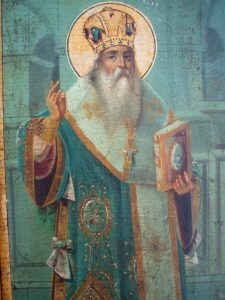 Saint Athanasius
Saint Athanasius
Bishop, Doctor of the Church(296-373)
Feast- May 2
St. Athanasius, also known as Athanasius the Great and Athanasius the Confessor, was a bishop and doctor of the church. He is called the “Father of Orthodoxy,” the “Pillar of the Church” and “Champion of Christ’s Divinity.” St. Athanasius was born to a Christian family in the city of Alexandria, Egypt, towards the end of the third century, sometime between the years 293 and 298. An earlier date, 293, is sometimes assigned as the more certain year of his birth corroborated by the undoubted maturity of judgement revealed in the two treatises “Contra Gentes” and “De Incarnatione”, which were admittedly written about the year 318 before Arianism as a movement had begun to make itself felt, as those writings do not show an awareness of Arianism. Cornelius Clifford places his birth no earlier than 296 and no later than 298, based on the fact that Athanasius indicates no first hand recollection of the Maximian persecution of 303, which he suggests St. Athanasius would have remembered if he had been ten years old at the time. Secondly, the Festal Epistles state that the Arians had accused Athanasius, among other charges, of not having yet attained the canonical age (30) and thus could not have been properly ordained as Patriarch of Alexandria in 328.
Of the claim that St. Athanasius’ parents were both prominent and well-to-do, we can only observe it is not contradicted by such scanty details as can be gleaned from the saint’s writings. Those writings undoubtedly betray evidences of the sort of education that was given, for the most part, only to children and youths of a better class. It began with grammar, went on to rhetoric, and received its final touches under the guidance of the more fashionable lecturers in the philosophic schools.
The Alexandria of his boyhood was an epitome intellectually, morally, and politically, of the ethnically many-colored Greco-Roman world. It was, moreover, the most important center of trade in the whole empire; and its primacy as an emporium of ideas was more commanding than that of Rome or Constantinople, Antioch or Marseilles.
St. Athanasius from his youth was pious. He left his paternal home to be raised by the bishop of Alexandria. Whether his long intimacy with Bishop Alexander began in childhood, we have no means of judging; but a story which pretends to describe the circumstances of his first introduction to that prelate has been preserved for us by Rufinus (Hist. Eccl., I, xiv). The bishop, so the tale runs, had invited a number of brother prelates to meet him at breakfast after a great religious function on the anniversary of the martyrdom of St. Peter, a recent predecessor in the See of Alexandria. While Alexander was waiting for his guests to arrive, he stood by a window, watching a group of boys at play on the seashore below the house. He had not observed them long before he discovered that they were imitating, evidently with no thought of irreverence, the elaborate ritual of Christian baptism. He therefore sent for the children and had them brought into his presence. In the investigation that followed it was discovered that one of the boys, who was no other than the future Primate of Alexandria, had acted the part of the bishop, and in that character had actually baptized several of his companions in the course of their play. Alexander, who seems to have been unaccountably puzzled over the answers he received to his inquiries, determined to recognize the make-believe baptisms as genuine; and decided that Athanasius and his playfellows should go into training in order to fit themselves for a clerical career. St. Athanasius received a wonderful education in Christian doctrine, Greek literature, philosophy, rhetoric and jurisprudence. He was well studied in the Hebrew Scriptures, the Gospel accounts and the Christian texts which would later be recognized by the Church as the canon of the New Testament.
Historical evidence indicates that he was fluent in Greek and Coptic as well. Some surviving copies of his writings are in Coptic, though scholars differ as to whether he himself wrote them in Coptic originally (which would make him the first patriarch to do so), or whether these were translations of writings originally in Greek.
As he grew up, St. Athanasius befriended many monks and hermits of the desert, including St. Antony. He became Alexander’s secretary in 318 after being ordained a deacon. Around this time, Athanasius wrote his first work, a theological treatise on the Incarnation which is still quoted extensively in Christian theological studies and spiritual literature. Around 323, Arius, an ambitious priest of the Alexandrian Church, denied the Divinity of Christ, and began spreading word that Jesus Christ was not truly divine, but merely created in time by the Eternal Father, causing the Arian Heresy. Learned, and deeply versed in the sacred writings St. Athanasius was like a new Samuel in the Lord’s temple, as befitted one whom God had chosen to be the champion and defender of His Church against this heresy.
St. Alexander demanded Arius produce a written statement on the false doctrine. It was condemned as heresy after two dissenting Bishops came forward. Arius and 11 other priests and deacons were deposed, or removed from their office, for teaching false doctrine. Arius left for Caesarea, but continued to teach his false doctrine and enlisted support from the Bishop of Nicomedia, Eusebius and other Syrian prelates.
Athanasius stood alongside Alexander during the famous Council of Nicaea to determine the matters of dogma. There he attracted the attention of all the prelates by the learning and ability with which he defended the Faith. It was during this meeting, summoned by Emperor Constantine, that Arius’ sentencing was officially confirmed, and the Nicene Creed was adopted as the Creed of the Church and a worthy symbol of the orthodox Christian faith. The early Christian Church, still undivided, rejoiced at the defense of the true nature of Jesus Christ.
As Saint Alexander was dying, he recommended St. Athanasius for his successor. Frances A. M. Forbes writes that when the Patriarch Alexander was on his death-bed he called Athanasius, who fled fearing he would be constrained to be made Bishop. “When the Bishops of the Church assembled to elect their new Patriarch, the whole Catholic population surrounded the church, holding up their hands to Heaven and crying; “Give us Athanasius!”. He was consecrated as the 20th Bishop of Alexandria in 328. His on-again-off-again episcopate spanned 45 years, of which over 17 encompassed five exiles, not counting approximately six more incidents in which Athanasius fled Alexandria to escape people seeking to take his life. In addition to the conflict with the Arians (including powerful and influential Arian churchmen led by Eusebius of Nicomedia), he struggled against the Emperors Constantine, Constantius II, Julian the Apostate and Valens. This gave rise to the expression “Athanasius contra mundum” or “Athanasius against the world”.
During his first years as bishop, Athanasius visited the churches of his territory, which at that time included all of Egypt and Libya. He established contacts with the hermits and monks of the desert, including Pachomius, which proved very valuable to him over the years.
Arianism never lay in its ideas from whatever school it may have been logically derived, the sect, as a sect, was cradled and nurtured in intrigue. Its prophets relied more upon curial influence than upon piety, or Scriptural knowledge, or dialectics. That must be borne constantly in mind, if we would not move distractedly through the bewildering maze of events that make up the life of St. Athanasius.
Eusebius of Nicomedia, who had fallen into disgrace and been banished by the Emperor Constantine for his part in the earlier Arian controversies, had been recalled from exile, after an adroit campaign of intrigue, carried on chiefly through the instrumentality of the ladies of the imperial household.
He himself sent a characteristic letter to the youthful Primate of Alexandria, in which he bespoke his favor for the condemned heresiarch, who was described as a man whose opinions had been misrepresented. In 330, Eusebius approached Emperor Constantine and persuaded him to write to Athanasius, urging that all those who were ready to submit to the definitions of Nicaea should be re-admitted to ecclesiastical communion. This Athanasius stoutly refused to do, alleging that there could be no fellowship between the Church and the one who denied the Divinity of Christ.
However, Eusebius of Nicomedia did not give up on his cause. He brought various ecclesiastical and political charges against Athanasius, which, though unmistakably refuted at their first hearing, were afterwards refurbished and made to do service at nearly every stage of his subsequent trials. Four of these were very definite, to wit: that he had not reached the canonical age at the time of his consecration; that he had imposed a linen tax upon the provinces; that his officers had, with his connivance and authority, profaned the Sacred Mysteries in the case of an alleged priest named Ischyras; and lastly that he had put one Arenius to death and afterwards dismembered the body for purposes of magic.
Accused of mistreating Arians and Meletians, Athanasius answered those charges at a gathering of bishops in Tyre, Lebanon, in 335. The council was full of Athanasius’ opponents and was led by an Arian. Athanasius realized his condemnation was already pre-decided. Eusebius of Nicomedia and other supporters of Arius deposed Athanasius. It can hardly be wondered at, that Athanasius should have refused to be tried by such a court. He, therefore, suddenly withdrew from Tyre, escaping in a boat with some faithful friends who accompanied him to Byzantium, where he had made up his mind to present himself to the emperor.
The circumstances in which the saint and the great catechumen met were dramatic enough. Constantine was returning from a hunt, when Athanasius unexpectedly stepped into the middle of the road and demanded a hearing. The astonished emperor could hardly believe his eyes, and it needed the assurance of one of the attendants to convince him that the petitioner was not an impostor, but none other than the great Bishop of Alexandria himself. “Give me”, said the prelate, “a just tribunal, or allow me to meet my accusers face to face in your presence.” His request was granted. An order was peremptorily sent to the bishops, who had tried Athanasius and, of course, condemned him in his absence, to report at once to the imperial city. On 6 November, both sides of the dispute met with Emperor Constantine I in Constantinople. At that meeting, the Arians claimed Athanasius would try to cut off essential Egyptian grain supplies to Constantinople.
Athanasius was condemned to go into exile to Augusta Treverorum in Gaul, now Trier in Germany, where he was received with the utmost kindness by the saintly Bishop Maximinus and the emperor’s eldest son, Constans, in 336. While there, he kept in touch with his flock by letter. Athanasius’ exile lasted for two and a half years. He returned to Alexandria in 338 to find both Emperor Constantine and Arius had died. Constantine’s empire was divided between his three sons, Constantine II, Constantius and Constans.
After he returned to Alexandria, his enemies continued to try to bring him to exile. They accused him of raising sedition, of promoting bloodshed, and detaining corn from Egypt for his own use. Eusebius was able to obtain a second sentence of deposition against St. Athanasius and get the election of an Arian bishop for Alexandria approved. After this, a letter was written to Pope St. Julius asking for his intervention and a condemnation of Athanasius. The case for Athanasius was set forth, and the pope accepted the suggestion offered by Eusebius for a synod to discuss the situation. St. Athanasius went to Rome to await his hearing, where he was under the protection of Constans, the Emperor of the West. During this time, Gregory of Cappadocia was installed as the Patriarch of Alexandria, usurping the absent St. Athanasius. St. Athanasius did, however, remain in contact with his people through his annual Festal Letters. In 339 or 340, nearly one hundred bishops met at Alexandria, declared in favor of St. Athanasius, and vigorously rejected the criticisms of the Eusebian faction at Tyre. Plus, Pope Julius I wrote to the supporters of Arius strongly urging St. Athanasius’s reinstatement, but that effort proved in vain. Pope Julius I called a synod in Rome in 340 to address the matter, which proclaimed St. Athanasius the rightful bishop of Alexandria. He was completely vindicated by the synod. His innocence was reaffirmed at the Council of Sardica. Two conciliar letters were prepared, one to the clergy and faithful of Alexandria, the other to the bishops of Egypt and Libya, in which the will of the Council was made known. Meanwhile, the Eusebian party had gone to Philippopolis, where they issued an anathema against St. Athanasius and his supporters. He was unable to return home to Alexandria until the death of the Cappadocian Gregory. Early in the year 343 we find St. Athanasius in Gaul; nowadays Belgium / Holland and surrounding areas, where the great champion of orthodoxy in the West, Hosius of Córdoba was Bishop. In 345 Emperor Constantius was forced to reconsider his decision, owing to a threatening letter from his brother Constans and the uncertain conditions of affairs on the Persian border, and he accordingly made up his mind to yield. Athanasius returned to Alexandria to scenes of people rejoicing after he had been absent for eight years.
However, in 353 Athanasius would face more condemnations by the Arians in the councils at Arles, France and again in 355 in Milan, Italy. Pope Julius died in April 352, and was succeeded by Liberius. The New Pope had been favorable to the cause of Athanasius. By Constantius’ order, the sole ruler of The Roman Empire after the death of his brother Constans, the Council of Arles was held in 353, which was presided over by Vincent, Bishop of Capua, in the name of Pope Liberius. The fathers, terrified of the threats of the Emperor, an avowed Arian, consented to the condemnation of St. Athanasius. The Pope refused to accept their decision, and requested the Emperor to hold another Council, in which the charges against St. Athanasius could be freely investigated. To this Constantius consented, for he felt able to control the Council in Milan. Persecution continued against St. Athanasius and escalated to physical attacks against him.
Emperor Constantius, renewing his previous policies favoring the Arians, banished St. Athanasius from Alexandria once again. This was followed, in 356, by an attempt to arrest St. Athanasius while he was celebrating a vigil Liturgy in a church in Egypt, soldiers forced their way in and killed some of the congregation. Athanasius fled to desert of Upper Egypt, where a group of monks kept him safe for six years as a hermit. During this period, St. Athanasius completed his work Four Orations against the Arians and defended his own recent conduct in the Apology to Constantius and Apology for His Flight. Constantius’ persistence in his opposition to St. Athanasius, combined with reports St. Athanasius received about the persecution of non-Arians by the new Arian bishop George of Laodicea, prompted St. Athanasius to write his more emotional History of the Arians, in which he described Constantius as a precursor of the Antichrist.
The Arians wanted the approval of an Ecumenical Council. They sought to hold two councils. Constantius, summoned the bishops of the East to meet at Seleucia in Isauria, and those of the West to Rimini in Italy. At Seleucia, one hundred and fifty bishops, of which one hundred and five were semi-Arian. The semi-Arians refused to accept anything less than the “Homoiousion,” formulary of faith.
At Rimini were over four hundred of which eighty were Arian, the rest were orthodox. The orthodox fathers refused to accept any creed but the Nicene, while the others were equally in favour of the Sirmian. Each party sent a deputation to the Emperor to say there was no probability to agreement and asked for the bishops to return to their dioceses. For the purpose of wearing-down the orthodox bishops; Constantius delayed his answer for several months, and finally prevailed on them to accept the Sirmian creed. It was about this Council that St. Jerome said: ” …the whole world groaned in astonishment to find itself Arian.”
Constantius ordered Pope Liberius into exile in 356 giving him three days to comply. He was ordered into banishment to Beroea, in Thrace. He sent expensive presents if he were to accept the Arian position, which Liberius refused. Attempts were made to leave the presents in The Church, but Liberius threw them out. Constantius hereupon sent for him under a strict guard to Milan, where in a conference recorded by Theodore, the Holy Father boldly told Constantius that St. Athanasius had been acquitted at Sardica, and his enemies proved calumniators and impostors, and that it was unjust to condemn a person who could not be legally convicted of any crime. The Emperor Constantius, who had been the cause of so much trouble, died on 4 November 361 and was succeeded by Julian. Julian, revoked all sentences of exile enacted by his predecessor.
The Arians no longer presented an unbroken front to their orthodox opponents. The proclamation of the new prince’s accession was the signal for a pagan outbreak against the still dominant Arian faction in Alexandria. George, the usurping Bishop, was flung into prison and murdered. An edict had been put forth by Julian permitting the exiled bishops of the “Galileans” to return to their “towns and provinces”. St. Athanasius received a summons from his own flock, and he accordingly re-entered his episcopal capitol on 22 February 362. He convened a council at Alexandria and presided over it with Eusebius of Vercelli. St. Athanasius appealed for unity among all those who had faith in Christianity, even if they differed on matters of terminology. This prepared the groundwork for his definition of the orthodox doctrine of the Trinity. The council also was directed against those who denied the divinity of the Holy Spirit, the human soul of Christ, and Christ’s divinity. With characteristic energy he set to work to clear up the misunderstandings that had arisen in the course of the previous years, an attempt was made to determine still further the significance of the Nicene formularies. This lasted only a few months though. Emperor Julian’s plan for paganizing the Christian world couldn’t get very far as long as the champion for Catholic faith was around; therefore, Julian exiled St. Athanasius. On 23 October the people gathered about the proscribed bishop to protest against the emperor’s decree; but St. Athanasius urged them to submit, consoling them with the promise that his absence would be of short duration. He once again sought refuge in the desert. He stayed there until 363 when Julian died and the next emperor, Emperor Jovian, reinstated him. His first act was to convene a council which reaffirmed the terms of the Nicene Creed. Early in September 363 he set out for Antioch on the Orontes, bearing a synodal letter, in which the pronouncements of this council had been embodied. At Antioch he had an interview with the new emperor, who received him graciously and even asked him to prepare an exposition of the orthodox faith. The following February Jovian died; and in October 364 St. Athanasius was banished again by Jovian’s successor, Valens, who favored the Arian position and issued an order banning all Orthodox bishops who were exiled by Constantius. This time St. Athanasius simply left for the outskirts of Alexandria. Four months later, Valens was convinced by the local authorities, for fear of a popular uprising, to revoke his own order and have Athanasius was restored permanently. In 366 Pope Liberius died and was succeeded by Pope Damasus, a man of strong character and holy life. Two years later, in a council of the Church, it was decreed that no Bishop should be consecrated unless he held the Creed of Nicea. (F. A. Forbes).
St. Athanasius stood unmoved against four Roman emperors. Over the course of his life he was banished five times and spent 17 years in exile for the defense of the doctrine of Christ’s divinity. This man, who had endured exile so often, and risked life itself in defense of what he believed to be the first and most essential truth of the Catholic creed, died on May 2, 373 not by violence or in hiding, but peacefully in his own bed, surrounded by his clergy and mourned by the faithful of the see he had served so well.
Originally he was buried in Alexandria, but his remains were transferred first to Constantinople, then to Venice. In 1973, Pope Paul VI gave the Coptic Patriarch a relic of Athanasius. The relic is currently preserved under the new Saint Mark’s Coptic Orthodox Cathedral in Cairo, Egypt. However, the majority of Athanasius’s corpse remains in the Venetian church.
St. Athanasius was not a speculative theologian. As he stated in his First Letters to Serapion, he held on to “the tradition, teaching, and faith proclaimed by the apostles and guarded by the fathers.”
He is counted as one of the four great Eastern Doctors of the Church in the Catholic Church. In the Eastern Orthodox Church, he is labeled as the “Father of Orthodoxy”.
Though strong as diamond in defense of the Faith, he was meek and humble, pleasant and winning in conversation, beloved by his flock, unwearied in labors, prayer and mortifications, eloquent in speech, and unsurpassed in zeal for souls.
St. Gregory of Nazianzus (330–390, also a Doctor of the Church), said: “When I praise Athanasius, virtue itself is my theme: for I name every virtue as often as I mention him who was possessed of all virtues. He was the true pillar of the Church. His life and conduct were the rule of bishops, and his doctrine the rule of the orthodox faith.”
The vigor of St. Athanasius’ writings earned him the title of doctor of the Church.
His biography of St. Anthony the Great entitled Life of Antony became his most widely read work. Translated into several languages, it became something of a best seller in its day and played an important role in spreading the ascetic ideal in Eastern and Western Christianity. He also wrote several works of Biblical exegesis, primarily on Old Testament materials. The most important of these is his Epistle to Marcellinus (PG 27:12–45) on how to incorporate Psalm saying into one’s spiritual practice. His works on ascetism also include a Discourse on Virginity, a short work on Love and Self-Control, and a treatise On Sickness and Health. Examples of St. Athanasius’ polemical writings against his theological opponents include “Orations against the Arians,” his “Defense of the Divinity of the Holy Spirit” (“Letters to Serapion” in the 360s, and “On the Holy Spirit”), against Macedonianism and “On the Incarnation.”
St. Athanasius is often shown as a bishop arguing with a pagan, a bishop holding an open book or a bishop standing over a defeated heretic. He is a patron saint of theologians.
References and Excerpts
[1] F. Media, “Saint Athanasius,” Franciscan Media, 02-May-2016. .
[2] C. Online, “St. Athanasius – Saints & Angels,” Catholic Online. [Online]. Available: https://www.catholic.org/saints/saint.php?saint_id=336. [Accessed: 20-May-2018].
[3] “Saint Athanasius, Bishop, Doctor of the Church.” [Online]. Available: http://sanctoral.com/en/saints/saint_athanasius.html. [Accessed: 20-May-2018].
[4] “CATHOLIC ENCYCLOPEDIA: St. Athanasius.” [Online]. Available: http://www.newadvent.org/cathen/02035a.htm. [Accessed: 20-May-2018].
[5] “Athanasius of Alexandria,” Wikipedia. 18-May-2018.
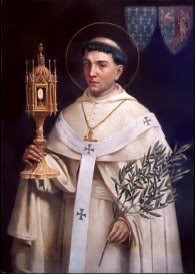 Saint Norbert
Saint Norbert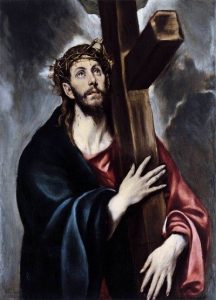 “Whoever wishes to come after me must deny himself, take up his cross, and follow me.”(Mark 8;34)
“Whoever wishes to come after me must deny himself, take up his cross, and follow me.”(Mark 8;34) Saint Athanasius
Saint Athanasius Saint Peter Canisius
Saint Peter Canisius Saint Eulogius
Saint Eulogius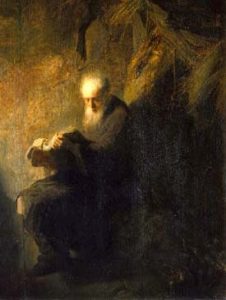 Smoke of Satan in the Church – Part 5
Smoke of Satan in the Church – Part 5 Saint Leander
Saint Leander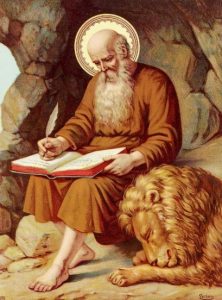 Smoke of Satan in the Church – Part 4
Smoke of Satan in the Church – Part 4 Consecration of Russia to Immaculate Heart of Mary
Consecration of Russia to Immaculate Heart of Mary